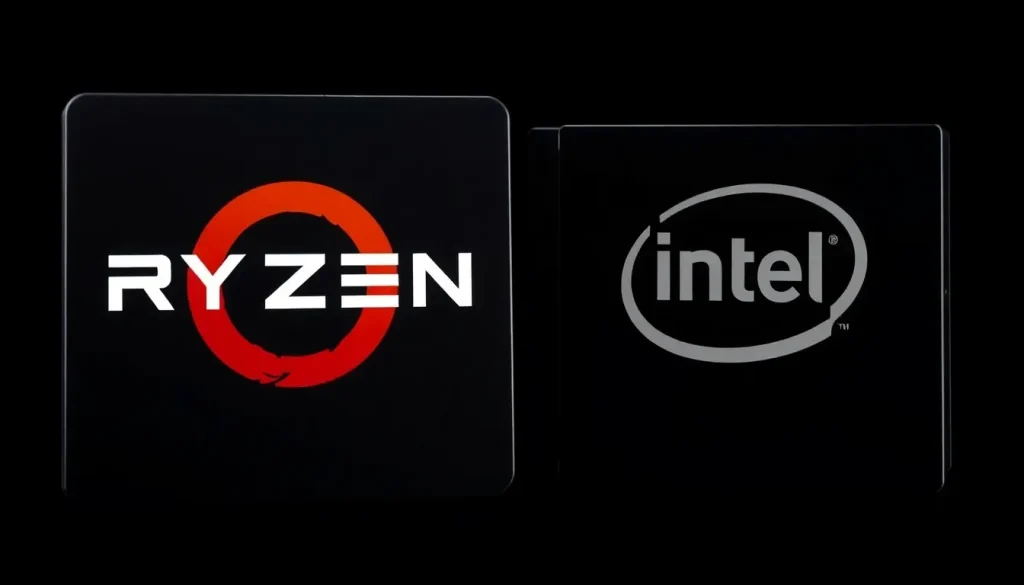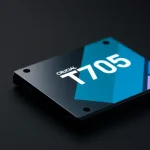AMD collaborates with Intel to manufacture Ryzen and EPYC CPUs

The prospect of AMD manufacturing chips in Intel's factories is a surprising twist in the landscape of semiconductor manufacturing. Two longstanding rivals, each with over half a century of competition, may soon collaborate on a critical component: the lithographic process. Current discussions suggest that we might see Ryzen and EPYC CPUs utilizing Intel's 18A and 14A nodes. Just a month ago, this seemed like a mere possibility, but now serious negotiations are underway.
The backdrop of this potential partnership is significant. Intel is facing a structural crisis in its manufacturing capabilities, struggling to produce cutting-edge chips on its own nodes and increasingly reliant on TSMC. In contrast, AMD, which exclusively designs CPUs and GPUs, also manufactures its products solely in Taiwan. However, AMD has managed to avoid the technological adoption issues that have plagued Intel, which is now in search of clients to validate its foundry business.
AMD seeks collaboration with Intel for CPU manufacturing
In this context, political factors come into play. The Biden administration is pushing for half of the chips consumed in the United States to be manufactured domestically, leading to a shift in export restrictions that previously impacted AMD's dealings in China.
Teaming up with Intel for part of its production could be a strategic move for AMD: it would satisfy Washington's demands while diversifying risks in a geopolitical environment that could abruptly disrupt entire markets.
What stands out is the thought of AMD utilizing Intel’s nodes. Historically, AMD has always designed its chips with external foundries in mind, including Global Foundries and TSMC. This would mark the first time that an AMD design could be processed in Intel machinery, a symbolic boundary that could dissolve at a moment when artificial intelligence is reshaping priorities and tariffs are redefining boundaries.
Political machinations: Why Intel must succeed

This potential collaboration reflects Intel's precarious position. With significant investments in progress, massive layoffs, and serious doubts surrounding the viability of its Intel 18A node due to yield issues, Intel is in dire need of demonstration that clients are willing to trust its manufacturing capabilities. Recently, they confirmed mass production plans, but the reality remains uncertain.
NVIDIA has already taken a leap of faith with Intel, securing an agreement for CPUs featuring NVLink and iGPU. If AMD were to follow suit, it would provide a tremendous boost to Intel’s vision of a “universal foundry,” a concept they championed not too long ago. Currently, details about which chips AMD might delegate for production remain scarce, and it’s unclear whether AMD would make a direct investment in Intel, similar to arrangements established by other partners. However, discussions are rumored to involve Ryzen or EPYC, possibly both, but not yet regarding the Instinct or Radeon accelerators.
While this collaboration may ultimately amount to nothing, the mere suggestion of it presents an unprecedented scenario: the coming together of two historical adversaries driven by Washington’s influence and the imperative to remain competitive in the silicon race against Taiwan and China.
The day a Ryzen or Radeon emerges from an Intel-processed wafer would signify a profound shift, one that would have seemed like science fiction just a few years ago. This scenario could be the clearest reflection of how geopolitics and artificial intelligence are rewriting the rules of the industry.
Understanding AMD EPYC and Ryzen CPUs
AMD has made significant strides in recent years, particularly with its EPYC and Ryzen processors. These chips are designed to compete directly with Intel's offerings, providing high performance for both consumer and server markets.
Key features of AMD's EPYC and Ryzen include:
- High core counts: Both EPYC and Ryzen processors offer a large number of cores, enabling better multitasking and performance in parallel processing tasks.
- Advanced manufacturing processes: AMD utilizes cutting-edge lithography techniques, including 7nm and 5nm processes, to enhance efficiency and performance.
- Increased memory bandwidth: AMD's architecture can support more memory channels, which is critical for data-intensive applications.
- Competitive pricing: AMD has positioned its processors at competitive price points, often offering better performance per dollar than its Intel counterparts.
The evolution of AMD EPYC processors
AMD's EPYC series has undergone rapid evolution since its inception, with the latest generation, EPYC Gen 5, incorporating advanced features and improvements.
Highlights of recent EPYC generations include:
- EPYC 9654: This model focuses on high-performance computing, designed for data centers and enterprise applications.
- EPYC 9965: Aimed at balancing performance with energy efficiency, suitable for a wide range of workloads.
- EPYC 9J15: Targeted at specialized applications, this variant offers tailored features for specific industry needs.
Where are AMD processors manufactured?
Most of AMD's processors are fabricated in Taiwan, primarily at TSMC facilities. This strategic partnership has enabled AMD to leverage TSMC's state-of-the-art manufacturing capabilities, positioning itself as a formidable competitor against Intel.
The implications of relying on external foundries
By depending on external foundries like TSMC, AMD has been able to avoid some of the pitfalls that have plagued Intel. However, this reliance brings challenges, particularly with supply chain disruptions and geopolitical tensions.
Key considerations regarding AMD's manufacturing strategy include:
- Supply chain vulnerabilities due to reliance on a single region.
- The need for diversification in manufacturing locations to mitigate risks.
- Potential impacts of geopolitical tensions on production capabilities.
Ultimately, AMD's potential collaboration with Intel could reshape the semiconductor landscape, opening new avenues for innovation and competition. As the industry evolves, the impact of these strategic partnerships will be closely monitored by market analysts and consumers alike.
For further insights into this evolving story, you can watch this relevant video:




Leave a Reply